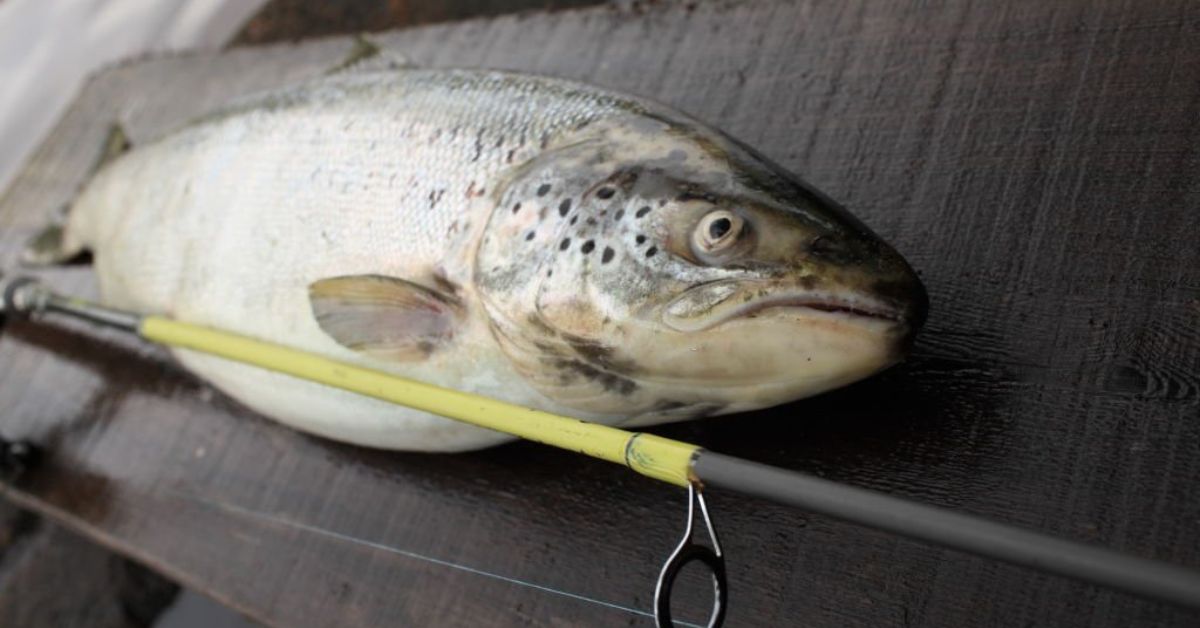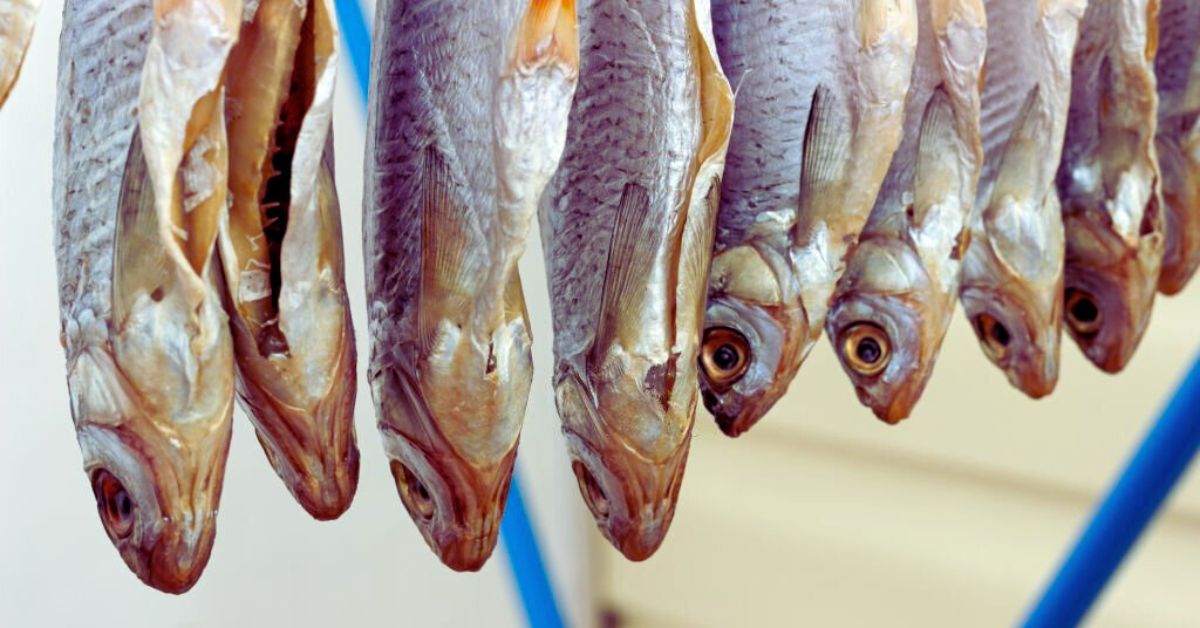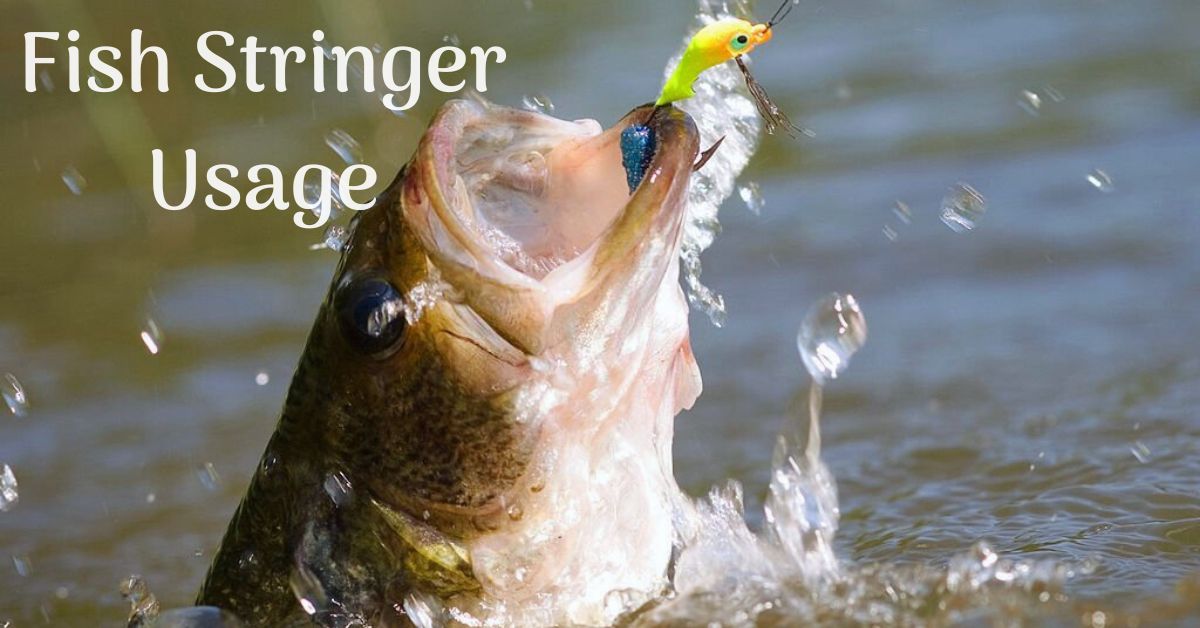Fishing has been a global sport for ages. Fish stringer usage is a crucial fishing technique. A fish stringer secures your catch as you fish.
An crucial piece of gear that may improve your fishing experience. Fish stringers need practice to use effectively.
We’ll cover everything about Proper Fish Stringer Usage in this detailed tutorial. We’ll help you perfect this crucial skill, from picking the appropriate stringer to securing your catch. Whether you’re a master or a beginner, this book will improve your fishing.
Table of Contents
1. Introduction to fish stringers and their purpose
Every fisherman needs a fish stringer. What is a fish stringer and why is it used? Let’s discuss fish stringers and their relevance in fishing.
A simple yet efficient fish stringer secures and transports captured fish in the water. A long, sturdy line or rope with loops or hooks at regular intervals makes it. These loops or hooks pierce the fish’s gills or mouths to keep them alive until they’re cleaned or released.
A fish stringer’s main function is to preserve your catch. Stringers keep fish immersed in water, unlike buckets or coolers. This maintains their body temperature and keeps them healthy until you cook or release them.
Fish stringers are handy for boat fishing and shallow-water wading. Instead of pulling your catch to shore or repeatedly returning to your boat, connect the fish to the stringer and let them swim. This saves time and reduces fish spoilage from air exposure.
Fish stringers lessen the chance of losing your catch. Fish often escape nets or buckets while fishing from piers or rough shorelines. With a stringer, you can keep your prized catch close to you and avoid losing it to the sea.
Finally, a fish stringer is essential for each angler who wants to learn fishing. Beyond convenience, it helps keep your catch fresh and high-quality. So bring a trustworthy fish stringer on your next fishing trip to improve your experience.
2. Types of fish stringers and their pros and cons
Each form of fish stringer has benefits and downsides. Choosing the correct fish stringer requires understanding the distinctions between these alternatives.
1. Stringers: Rope
Traditional rope stringers are the most popular fish stringers. They are usually constructed of sturdy nylon or polypropylene rope with metal or plastic clips at regular intervals. The clamps keep the fish in place as you fish.
Pros:
– Rope stringers are cheap and commonly accessible, therefore fisherman like them.
– They are lightweight and portable, making them ideal for lengthy fishing expeditions.
– Water and weather-resistant rope ensures durability and lifespan.
Cons:
– Rope stringers may become twisted, particularly if you have many fish on them.
– The clamps may not be as tight as others, allowing fish to fall off.
2. Metal Stringers:
The term implies that metal stringers are stainless steel or aluminum. The fish’s gills are secured by these stringers’ metal spikes or hooks.
Pros:
– Metal stringers are stronger than rope stringers.
– Their strong grasp prevents fish from escaping or slipping off.
– Metal spikes or hooks are simple to insert and remove from fish, speeding up the procedure.
Cons:
– Anglers worried about mobility may find metal stringers heavier and thicker than rope stringers.
– Metal hooks penetrating fish gills may be unethical, particularly if catch-and-release fishing is done.
3. PVC Tube Stringers:
The market has just introduced PVC tube stringers. These stringers are hollow PVC tubes with caps on both ends. The caps lock the fish in the tube.
Pros:
– Since fish are contained in PVC tube stringers, tangling is avoided.
– Their strong grasp keeps fish in place throughout shipping.
Cons:
– PVC tube stringers are thicker and less flexible than rope or metal stringers.
– Cleaning and maintaining the tube may reduce odor and bacterial development.
The fish stringer you choose depends on your tastes, fishing style, and fishing circumstances. Consider durability, portability, convenience of use, and ethics to choose the ideal solution.
3. Choosing the right fish stringer for your needs
Any fisherman who wants to perfect fish stringing must choose the correct stringer. It might be difficult to choose the right decision with so many possibilities.
Consider the fish stringer material first. The most frequent materials are stainless steel and nylon. Durable stainless steel stringers can handle bigger fish and withstand corrosion. However, nylon stringers are lightweight, flexible, and ideal for little catches.

Next, consider stringer length. Fishermen fishing from boats or piers like longer stringers because they let you retain your catch in the water. Shorter stringers are simpler to handle and carry for shore fishing.
Also, consider the fish stringer design. Some stringers include quick-release devices for fish attachment and disengagement. When fishing, this is handy for releasing a fish or switching stringers fast.
Number of stringer hooks or clips should also be considered. many hooks or clips save time and effort when stringing many fish. If you wish to keep each fish separate, a stringer with clips may be better.
Finally, consider the fish stringer’s weight. Make sure the stringer you pick can handle the fish you usually catch.
You may choose the right fish stringer for your fishing requirements by examining its material, length, design, number of hooks or clips, and weight capacity.
Remember, buying a good fish stringer will improve your fishing experience and protect your catch.
4. Understanding how to properly handle and secure fish on a stringer
Fish on a stringer must be handled and secured properly to retain freshness and quality until cleaned and cooked. There are many fish stringer rules to follow.
Carefully handling the fish comes first. Avoid excessive squeezing or clutching, which may stress and injure their delicate scales and skin. Instead, hold the fish gently yet firmly to prevent them from falling.
After grabbing the fish, connect it to the stringer. Find a strong stringer that can endure fish weight and resistance. A robust metal or nylon stringer with tight clasps is preferred.
Insert the stringer through the fish’s gill plate or mouth and out through the vent or anus to connect it. This procedure reduces fish stress and maintains their natural alignment. This technique should not pierce crucial organs.
Once the stringer is through, slide the clasp or hook to keep the fish from slipping. Make sure the attachment won’t come undone while fishing.
Stringers should keep fish in the water as much as possible. This keeps them fresh and avoids drying. Attach the stringer to the boat to keep the fish underwater while you fish.
Always treat fish with respect and care to ensure their health and quality until you’re ready to cook them. You may improve your fishing experience by mastering stringer fish handling and fastening.
5. Step-by-step guide on using a fish stringer effectively
A fish stringer may alter the game for anglers who want to keep their catch fresh and safe. To master this tool, you must know the appropriate method and processes. This step-by-step instruction will teach you how to use a fish stringer.
Select the Right Fish Stringer
Make sure you have a solid fish stringer before starting. Stringers composed of stainless steel or nylon-coated wire can withstand the weight of your catch.
In Step 2, prepare the fish
Take care of your captured fish to avoid stress and harm. Remove hooks and lures gently without harming yourself or the fish. To securely handle an active fish, use a net or glove.
Step 3: Add Stringer
Find the stringer’s piercing or connection place with the fish. A sharp metal spike or looped end is typical. Use care to guide the spike or loop through the fish’s bottom jaw and into the tough skin or cartilage.
Step 4: Secure Fish
Gently draw the stringer through until the fish hangs freely. Make sure the stringer is firmly secured and won’t fall off. This is essential to avoid losing your catch.
Step 5: Store Fish Properly
Now that the fish is firmly connected to the stringer, keep it properly. To keep the fish fresh, totally immerse it. If you can’t, keep the fish in a cool, shady spot away from direct sunshine and heat.
Step 6: Fish Monitoring
Check the fish on the stringer occasionally to ensure it’s safe and undamaged. This will keep the fish fresh until you clean or prepare it.
Follow these step-by-step instructions to utilize a fish stringer and keep your catch fresh and secure throughout your fishing expedition. Always emphasize fish well-being and treat them gently to reduce stress and injury. Happy fishing!
6. Tips and techniques for managing multiple fish on a stringer
Managing many fish on a stringer may be difficult, particularly for ardent anglers who want to capture many fish. You can master fish stringer management and keep your catch safe and fresh with the appropriate advice and practices.
A robust fish stringer that can bear several fish’s weight and size is a must. Find a stringer with robust, rust-resistant hooks or clips to secure each fish.
Balance your fish stringer to avoid it getting overly heavy on one side. Securely connect the first fish to the stringer. Next, gently lay the next fish on the stringer, spreading weight evenly. This will keep fish stable and avoid slippage.

Consider a fish stringer with compartments or clips for each fish. This prevents tangling and keeps fish separate and easy to clean and release.
Positioning the fish headfirst on the stringer is also advantageous. This reduces stress on fish and improves gill water circulation, keeping them alive and fresh longer.
Be aware of water temperature and conditions. To keep fish fresh in warmer waters, keep them underwater. Consider shading the stringer or using a cooler bag to shield the fish from direct sunshine and heat.
Finally, handle stringered fish carefully. Avoid dragging the stringer around rocks or uneven surfaces to avoid damaging the fish or slipping off. To protect the fish and reduce stress, carefully raise the stringer while supporting them.
These stringer management tactics will keep your catch safe, fresh, and in good condition until you clean or release it. Happy fishing!
7. Safety precautions and best practices when using a fish stringer
Always prioritize safety while using a fish stringer. This equipment may keep your catch secure while you fish, but you must take steps to protect yourself and the fish.
First and foremost, thread the fish carefully. Avoid employing excessive force that might hurt the fish. This involves carefully handling the fish and avoiding squeezing or twisting.
Additionally, you must pick the correct stringer for the fish’s size and weight. Thin or weak stringers might break and lose your catch when used for huge fish. However, a strong stringer for a little fish may stress or injure it.
Make sure the fish is securely attached to the stringer before adding it. Stringers are often passed through the fish’s bottom lip or mouth and out through the gills. This secures the fish while minimizing injury.
Avoid dragging a stringered fish through rocks or uneven terrain. This may injure fish and cause discomfort and illness. To reduce stress, hold the stringer erect and keep the fish in the water.
Finally, watch your strung fish. Monitor for symptoms of discomfort or damage, such as significant bleeding or trouble breathing. To save the fish, release it quickly if you discover any problems.
Following these safety measures and best practices, you can string fish while protecting them. Fishing ethically and with respect for the environment and its inhabitants can be fun and rewarding.
8. How to clean and maintain your fish stringer for longevity
Fish stringers must be cleaned and maintained to last and operate well. Fish scales, slime, and other debris may build up on the stringer, causing corrosion, smells, and damage. These easy methods can preserve your fish stringer for years.

1. After each usage, clean the fish stringer with freshwater to remove scales and slime. Make sure the clasp and hooks are clean. Grime and rust are reduced by this first stage.
2. Use mild detergent: For a deeper clean, use fishing gear detergent or soap. Scrub the stringer, hooks, and clasp with a gentle brush or sponge. Thoroughly rinse to eliminate soap residue.
3. After washing, fish stringers must be completely dried before storage. Air-dry it in a well-ventilated, shaded place. This prevents germs and mold from growing, which degrade and stink.
4. Consider lubricating your fish stringer’s clasp and moving components with silicone-based lubricant frequently. This promotes smooth functioning and avoids corrosion.
5. Fish stringer should be stored in a cool, dry area when not in use. Store it away from excessive humidity and harsh temperatures, which may promote corrosion and destroy it. A storage bag or container might provide protection.
By following these cleaning and maintenance routines, you may prolong the life of your fish stringer and keep it trustworthy for future fishing trips. Remember, a well-maintained fish stringer improves your fishing experience and preserves your catch.
9. Alternatives to fish stringers and when to use them
Fishermen use fish stringers to secure their catch, but there are other methods that might work just as well. Knowing these choices and when to utilize them may improve your fishing experience.
Fish baskets and creels may replace fish stringers. They protect and ventilate your catch in woven mesh or wire baskets. You may select a size and design that meets your requirements. Fish baskets let fish to swim and stay healthy, making them ideal for keeping fish alive and well.
Another option is a cooler or fish bag. Insulated bags or containers keep your catch cold and fresh, particularly in hot weather or on lengthy fishing expeditions. Fish bags are useful if you want to keep your fish for a long time or are targeting bigger species that need more room.
Stringers may not be feasible or desirable in certain circumstances. In tumultuous conditions, a stringer may tangle or strain the fish. In such circumstances, a boat livewell or fish box may be preferable. Fish stay healthy and active in livewells with flowing water until you release or clean them.
Your fishing trip’s conditions should determine whether you employ a regular fish stringer or one of these options. For catch-and-release fishing, a landing net or fish gripper is more compassionate and effective.
By learning when to use these alternatives, you can adjust to diverse fishing situations and protect your harvest. You’ll master fish stringing and improve your fishing experiences by using new tools and tactics.
10. Wrapping Up
In conclusion, learning to string fish may improve your fishing experience and efficiency. Proper method and equipment can properly secure and transport your catch, preserving its freshness and quality.
This thorough tutorial has covered everything from fish stringer purpose and advantages to choosing the proper kind. We also covered the step-by-step procedure of stringing a fish, emphasizing adequate care.
Follow these strategies to improve your fishing game and use a trustworthy fish stringer. Always put fish health first and treat them gently.
Also, consider environmental issues and restrictions while utilizing a fish stringer. Sustainable fishing requires following local rules.
Mastering fish stringer may improve your fishing experience, regardless of your experience. It keeps fish fresh and simplifies washing and preparation.
So learn fish stringing. Practice the methods, try various stringers, and enjoy the ease and delight of fishing with it.
Happy fishing!
Our detailed guide on fish stringing should have been useful and enlightening. Understanding fish stringer tactics and strategies may improve your fishing experience, regardless of your expertise.
